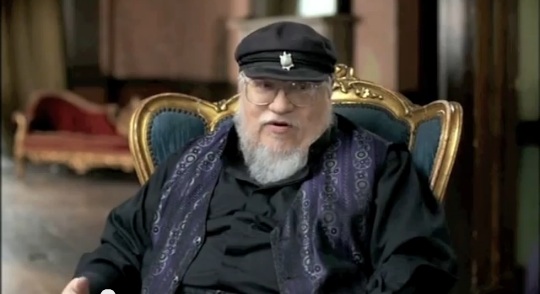The Importance of George R.R. Martin’s Anthology Work
Written by Ian Thomas Malone, Posted in Blog, Game of Thrones
“Finish the book” is a phrase that’s become intrinsically linked to George R.R. Martin in the wake of Game of Thrones’ success in 2011. The long wait for The Winds of Winter has many fans angry, though it’s worth noting that the delays are neither surprising nor unprecedented. Five year gaps have become the norm with A Song of Ice and Fire and that was before Martin became one of, if not, the most famous author on the planet. But Martin hasn’t been away from writing while he’s traveled the world giving interviews and attending launch parties.
Since A Dance With Dragon’s release in 2011, Martin has scripted four Game of Thrones episodes, served as the coeditor of five anthologies (also a contributor to two), and as a coauthor of The World of Ice and Fire, which comes out next week. He’s also released several TWOW chapters, though it’s still pretty unclear as to how far along he is with the book. For a man in his sixties who famously detests writing on the road, that’s a pretty heavy workload.
As expected, his work on other projects takes a backseat in the media to ASOIAF. That’s what happens when you author a worldwide phenomenon. While anthologies don’t create the kind of buzz that garners much mainstream attention, it can be easy to overlook the value of the work he’s doing on them.
Martin’s rise to fame is much different from other celebrity authors like Stephen King and J.K. Rowling, who achieved mainstream success quite early on in their careers. Martin’s first novel was released twenty years before A Game of Thrones, which in turn was released nine years before A Feast for Crows debuted at number one on the New York Times Best Seller list in 2005, placing him in the upper echelon of fantasy writers. That being six years before GOT premiered on HBO, showing us the long and unusual journey he took to stardom.
So what does this have to do with anthologies? Let’s look at Robert Silverberg’s Legends, the anthology that housed The Hedge Knight, the first Tales of Dunk and Egg novella. It’s certainly possible to make the case that Legends has the most star power of any fantasy anthology ever written with contributions from King, Robert Jordan, Terry Goodkind, Anne McCaffrey, Orson Scott Card, Terry Pratchett, and Raymond E. Feist among others. Legends II includes Terry Brooks, Neil Gaiman, and Diana Gabaldon, adding to the series’ immense name recognition.
The funny thing about Legends in the year 2014 is that Martin wasn’t even famous enough to be featured on the front cover when it came out in 1998. He didn’t get that accolade until the sequel in 2003. To your average consumer, Martin would likely be placed second behind King if the book came out today for the first time.
The success of Legends contributed to the fortunes of the lesser-known writers, who benefited from the exposure that they received from being featured alongside established names like King and Jordan. Many copies of A Game of Thrones still feature Jordan’s stamp of approval. While that’s something that’s easy to overlook, that sort of quote can be a tremendous boost for unknown writers.
Which is why Martin’s work on anthologies is not only important to the literary world, it also shows his true character. This is a guy who busted his ass for decades to get where he is now. But he didn’t make his fortune without some help and he remembers that. Pay it forward at its finest.
Martin’s name recognition changes the lives of the authors in his anthologies. His name headlining collections like Dangerous Women and Rogues is huge, even for the writers featured on the back of the book, like Martin once was. The literary world is as large and dense as Westeros and it’s very difficult to get exposure for books if you’re an unknown. Being featured in an anthology with someone like Martin’s name of the cover is practically a gift from R’hllor himself.
While “finish the book” is a catchy phrase, it’s important to remember that Martin is a man who achieved his dream late in life is and doing what he needs to do to get his creative vibes in order. That process serves as a tremendous benefit to the literary world as a whole, which needs people like Martin to champion works that might otherwise go unnoticed.
The wait for The Winds of Winter is certainly annoying and perhaps even more so now that the show is starting to catch up with the books, but there are still plenty of other Martin related works to enjoy. Who knows, you might even discover a new author. Anthologies might not be what the masses want from Martin, but he’s doing work that represents his continued devotion to maintaining interest in books as a whole. As Tyrion once said, “a mind needs books as a sword needs a whetstone, if it is to keep its edge.”
Thank you for reading. If you enjoyed this article, there’s a Game of Thrones category under the blog section. I also have a Facebook page and would appreciate a “like” if you feel so inclined.












